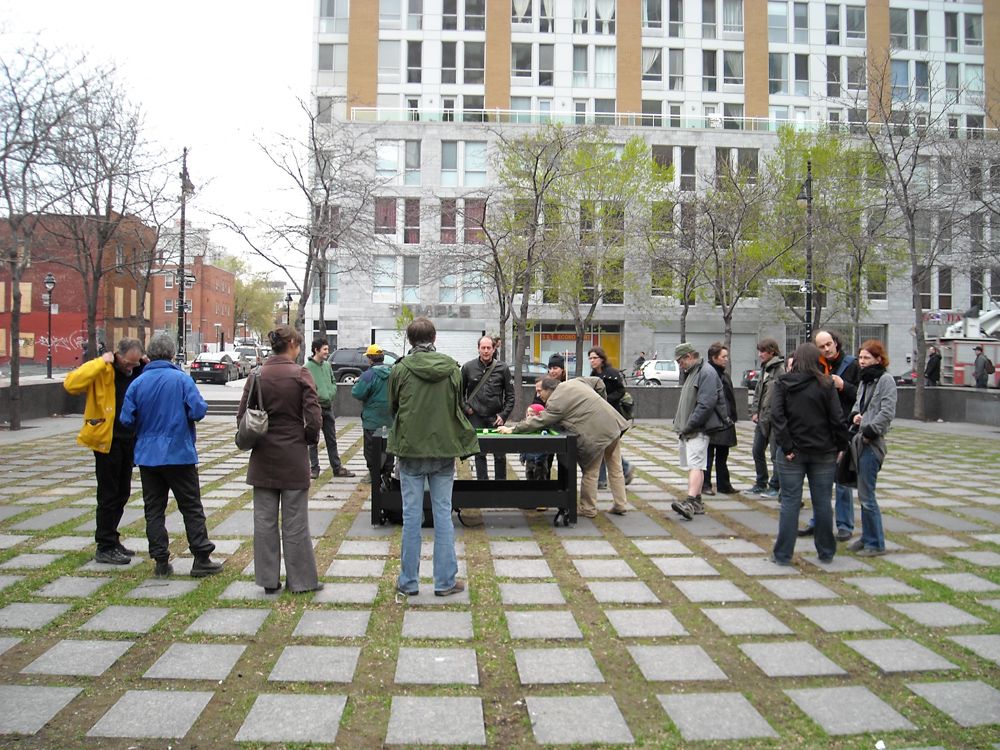
Mobile Space
2008.04.05 - 05.31
MARIE-JOSÉE JEAN AND PATRICE LOUBIER
The hypermobility of individuals today, Montréal’s urban development as a sort of archipelago of specialization, mass tourism and the consequent multiplication of cultural and festival-related activities—all of this will change the way the downtown core is used and how people move around within it. Mobile Space aims to observe and investigate the transformations imminent in this area where VOX has been headquartered since 2004.
This famed neighbourhood, at once artistic centre and red-light district, is remarkable not only for its key role in Montréal’s history, but also as a locus of cross-pollinization, be it linguistic (St-Laurent Boulevard, which bisects it, is the traditional dividing line between English-speaking west and French-speaking east), ethnic (it is home to Chinese, Italian, Jewish and Portuguese communities, among others) or social (its usage is diverse: here one finds cultural infrastructures, government offices, the sex and entertainment trades, the criminal underworld, retail businesses). It is now poised to undergo profound transformation, because of changes about to be made to the urban fabric—development of public spaces, revitalization of downtown with implementation of the new Quartier des spectacles, and so on—but also due to the increasingly frequent use of surveillance systems, justified by the obsession with security characteristic of modern societies. The neighbourhood’s cultural redefinition is being accompanied by increased efforts to secure it, in response to the criminal activities and delinquency that continue to exist there. The area now seems divided, torn even: on the one hand, it is a venue for festive celebrations and creative effervescence (drivers of recreation and tourism), and on the other, a public space fraught with tension, increasingly patrolled by police and monitored by surveillance and data archiving mechanisms.

Seven artists were invited to conduct a series of visits to this urban environment and subsequently offer the public several routes, with the intersection of St-Laurent Boulevard and Sainte-Catherine Street as the epicentre of their explorations. Far from being limited to a strict visual transcription of the area’s physical or urban geography, these guided itineraries will sound out its varied strata—ranging from aural spaces to tourist representations, gentrified spaces and surveillance systems, among others. Proceeding for the most part from a work in progress paradigm, the projects will be deployed throughout the duration of the event in the form of maps and suggested routes, photographic, sound or video documentation, scorecards, or bona fide guided tours. The map will thus be concretely superimposed over the territory, pointing the way to actions such as samplings, encounters, investigations and walking tours. The formula will also activate a process of back-and-forth journeys between the gallery and the urban environment, between documentation and the raw experience of the neighbourhood. Indeed, the title Mobile Space speaks to the need for artists and audiences alike to travel between artspace and cityspace